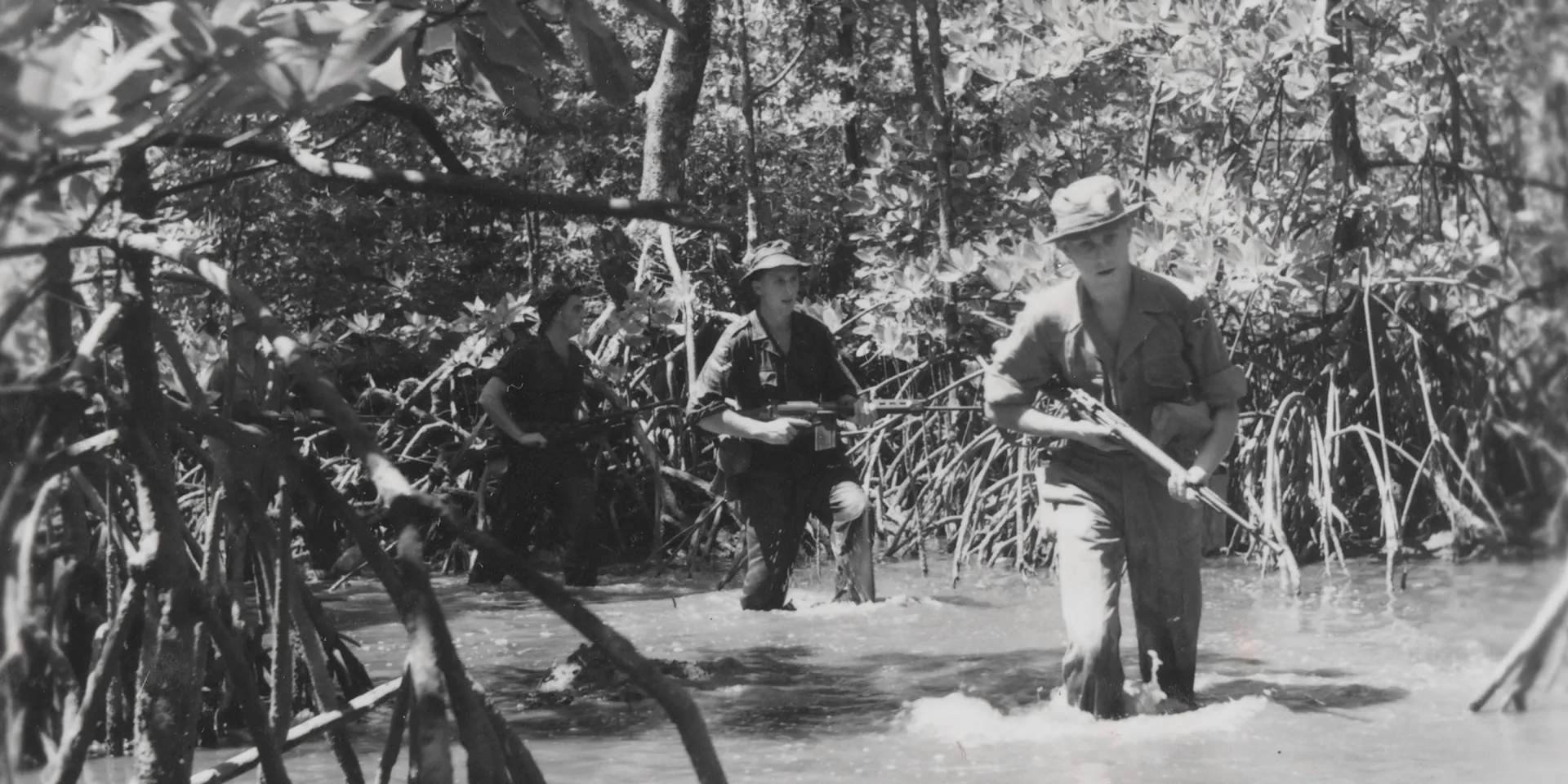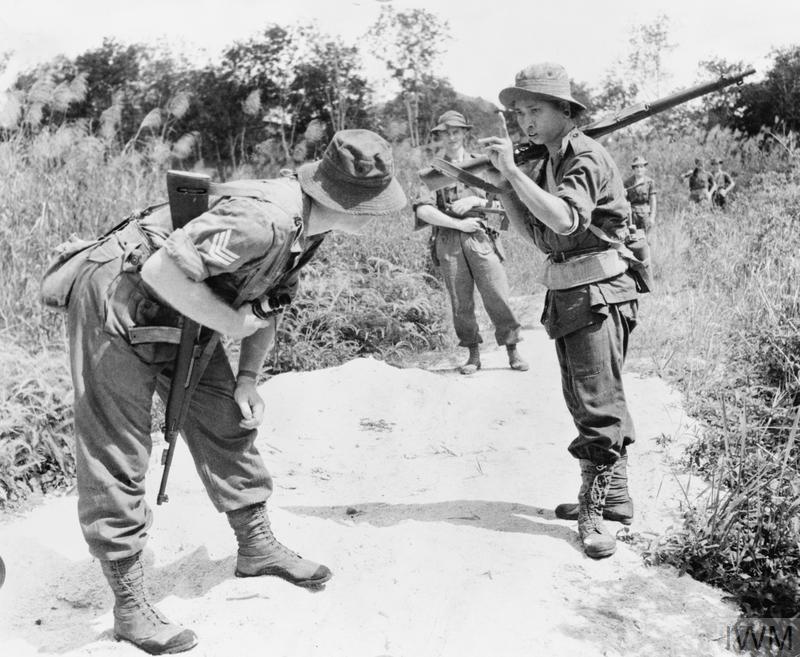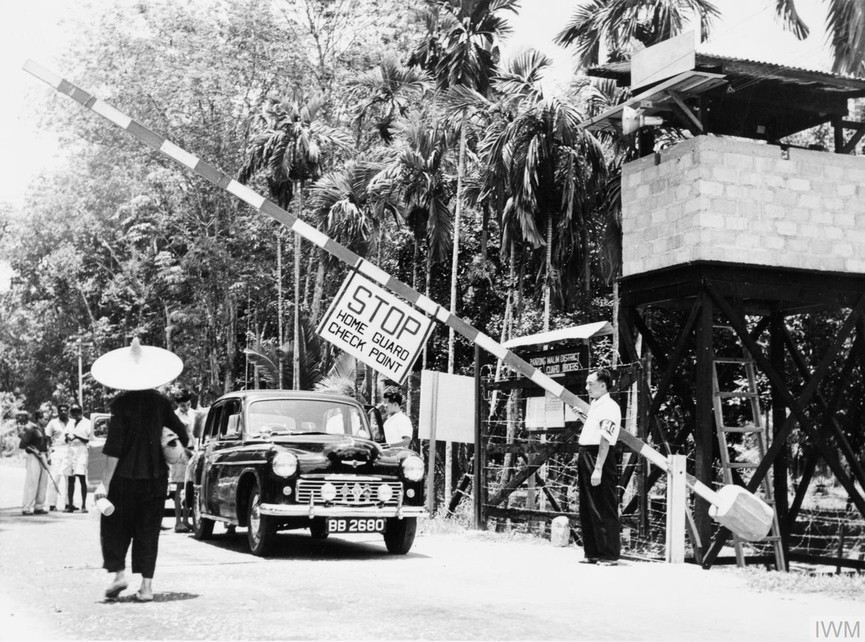The jungle whispered secrets of rebellion. In the sweltering heat of post-World War II Malaya, a conflict was brewing that would change the course of colonial history forever. The Malayan Emergency, a complex and brutal struggle lasting from 1948 to 1960, represented more than just a regional conflict – it was a pivotal moment in the fight against communist insurgency.

British troops patrolling through dense jungle during the Malayan Emergency. Credit: Imperial War Museum
Roots of Conflict: Understanding the Landscape
Malaya’s colonial history was a powder keg of tension. British colonial rule had long suppressed local aspirations, and World War II had dramatically transformed societal dynamics. The Malayan Communist Party (MCP), emboldened by wartime resistance against Japanese occupation, saw an opportunity to challenge colonial authority. Their guerrilla tactics would soon plunge the region into a decade-long struggle that would test the limits of counter-insurgency warfare.

British forces conducting operations in Malayan jungle. Credit: National Army Museum
The Spark of Rebellion
On June 16, 1948, communist insurgents launched a series of violent attacks that would trigger the emergency declaration. Rubber plantation workers and British administrators became targets, marking the beginning of a ruthless guerrilla war. The British response was swift and strategic, implementing what would become a groundbreaking “Hearts and Minds” approach to counter-insurgency.
Strategic Transformation: Sir Gerald Templer’s Approach
Enter Sir Gerald Templer, the pivotal figure who would revolutionize the conflict’s approach. Unlike traditional military commanders, Templer understood that winning meant more than military victories. He combined aggressive military action with unprecedented social development, creating the controversial but effective New Villages relocation program. These strategically designed settlements separated communist sympathizers from active rebels, effectively cutting off the insurgency’s support network.

New Village establishment during the Malayan Emergency. Credit: Imperial War Museum
The Human Cost of Conflict
The emergency wasn’t just a military campaign – it was a profound social transformation. Entire communities were uprooted, economic structures were disrupted, and psychological scars ran deep. Local populations found themselves caught between communist rebels and colonial authorities, forced to navigate an incredibly complex political landscape.
Global Significance and Legacy
The Malayan Emergency became a critical case study in counter-insurgency strategies. Its lessons would influence military thinking worldwide, demonstrating that successful conflict resolution requires more than military might. It showed that understanding local dynamics, winning community support, and implementing comprehensive social strategies were crucial to defeating insurgencies.
Conclusion: A Turning Point in History
By 1960, the emergency had fundamentally reshaped Malaya. The communist insurgency was defeated, setting the stage for Malaysian independence. More importantly, it demonstrated the complex interplay between colonial power, local aspirations, and revolutionary movements.
The Malayan Emergency remains a testament to the intricate nature of conflict – a brutal, transformative period that changed not just a nation, but the understanding of how societies navigate political upheaval.
References:
Imperial War Museum – A Short Guide to the Malayan Emergency – link
National Army Museum – The Malayan Emergency – link
Categories: Asian History, Colonial History, History, Military History, War History
Tags: British Colonial History, Communist Insurgency, Counter-insurgency, Malayan Emergency, Malaysian History, Military History, Sir Gerald Templer, Southeast Asia
Religion: Multiple
Country of Origin: Malaysia, United Kingdom
Topic: Military History
Ethnicity: Multiple


